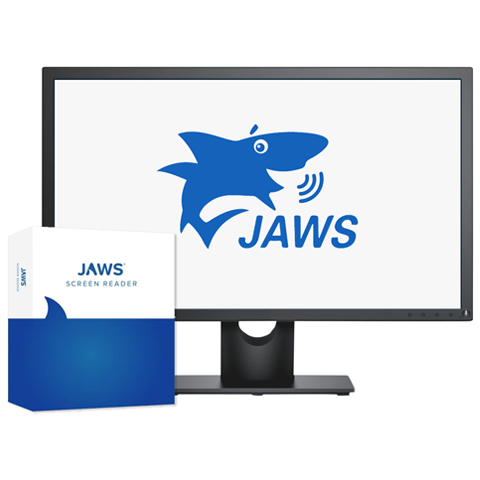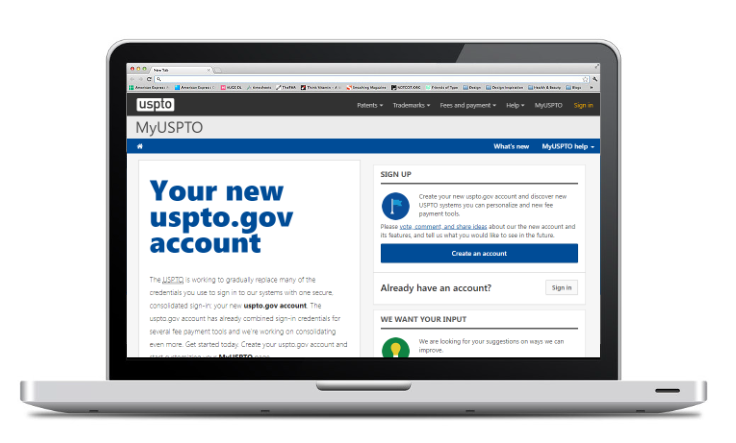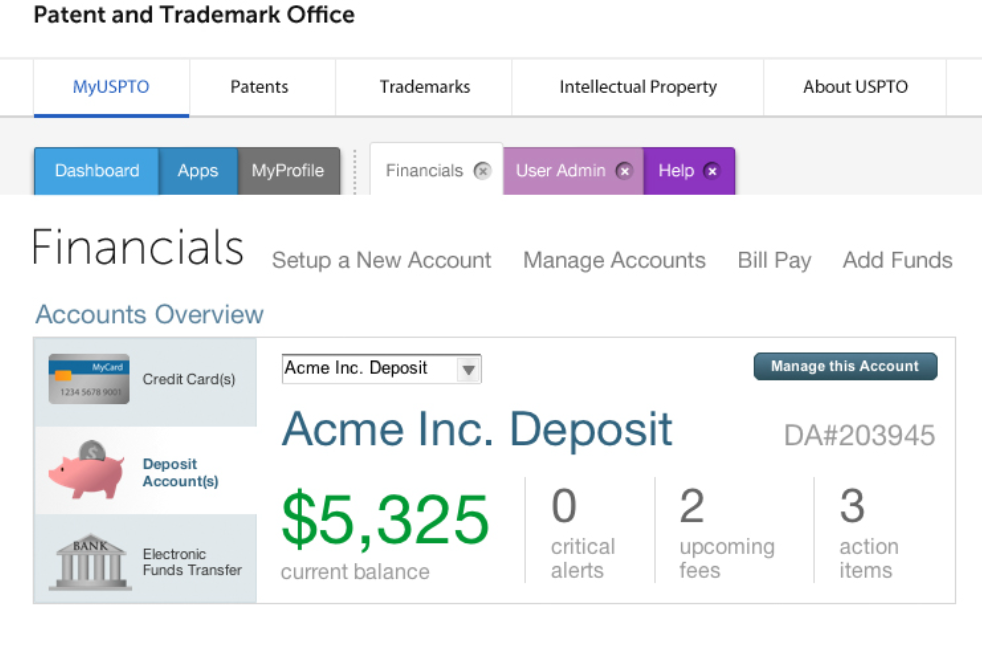
MyUSPTO – Enabling self-service account management
I co-Ied a project while working at Design for Context, a design consultancy. The United States Patent & Trademark Office (USPTO) had a need to create self service capabilities for users, including the ability to update contact and payment information related to conducting business with the USPTO.
Challenge
Business Need:
Reduce manual workload for call centers and back-office staff handling routine updates.
Strengthen compliance and security for sensitive user data.
Improve efficiency and satisfaction through streamlined self-service options.
Support federal mandates for digital transformation and CX modernization.
User Pain Points:
No self-service: Users relied on phone calls or mailed forms for basic updates.
Fragmented processes: Separate channels forced users to repeat steps across offices.
Long delays: Routine updates took days or weeks, affecting critical transactions.
Limited visibility: Users lacked status transparency, driving confusion and support calls.
Poor accessibility: Legacy systems failed to meet modern usability and accessibility standards.
Approach
As co-lead on the MyUSPTO initiative, I led end-to-end research and design: conducting interviews, contextual inquiries, and workflow analyses to understand how inventors, legal representatives, and businesses used USPTO systems. We identified key self-service barriers and prioritized improvements in payment updates, contact management, and correspondence tracking. Partnering with leadership, designers, and developers, I translated findings into a unified experience strategy that balanced user needs, compliance, and security. Through iterative usability testing and design reviews, we rapidly addressed critical issues, such as unclear financial labels and error handling, ensuring each prototype improved usability and technical feasibility.
Streamlined financial management module
I designed and tested a self-service workflow that allowed users to securely add, update, or remove payment methods without calling USPTO. By integrating validation and error-prevention patterns, we reduced abandoned transactions and decreased dependency on staff intervention.
Unified account dashboard
I co-created a single-point-of-access dashboard where users could manage payment profiles, update contact information, and monitor correspondence. This eliminated the need to navigate multiple siloed systems and cut routine update times from days/weeks to minutes.
Accessibility & compliance integration
From the outset, I embedded WCAG-compliant design patterns and user-tested them with diverse participants, ensuring that MyUSPTO met federal accessibility standards. This not only improved inclusivity but also reduced compliance risk for the agency.

Outcomes
As co-lead on the MyUSPTO initiative, I led user research and workflow analysis to identify barriers to self-service and prioritize high-friction areas like payment updates and contact management. Partnering with agency leadership, designers, and developers, I translated insights into a unified, compliant, and accessible experience strategy. Through iterative usability testing and design reviews, we refined prototypes to address key issues such as account clarity and error handling, ultimately delivering a more intuitive and efficient user experience.
Self-Serv
For the first time, users could independently manage financial profiles and contact information online, reducing reliance on mailed forms, phone calls, and manual agency intervention.
Faster
transaction processing. Updates that previously took days or weeks were completed in minutes, improving timeliness for payments, renewals, and correspondence—critical to protecting intellectual property rights.
Improved
user trust and transparency. Users gained visibility into the status of updates and transactions, which built confidence in the system and reduced confusion, uncertainty, and repeated inquiries.
Selected Works
(240) 455-4586 ● design@faymail.com
Copyright © 2025 Rob Fay


